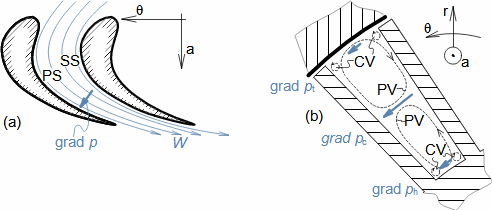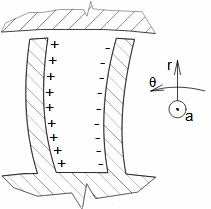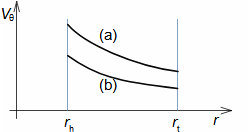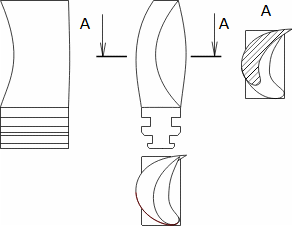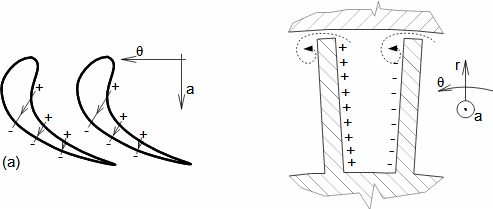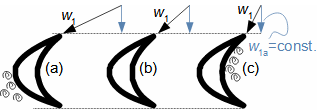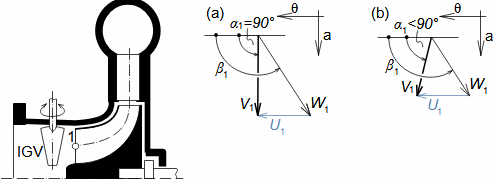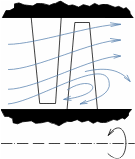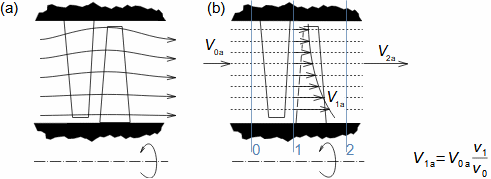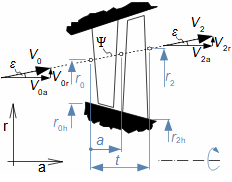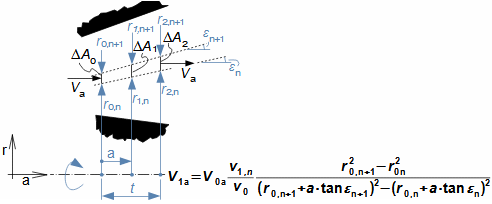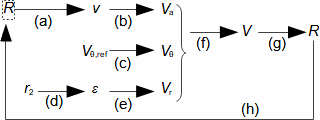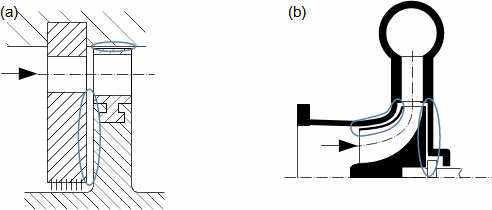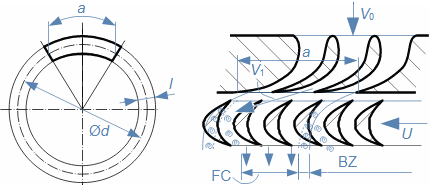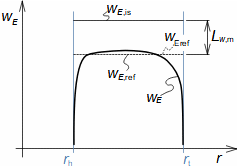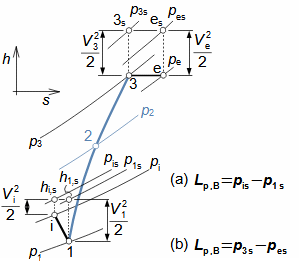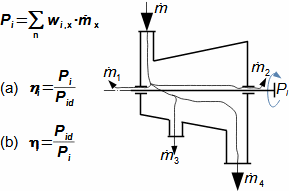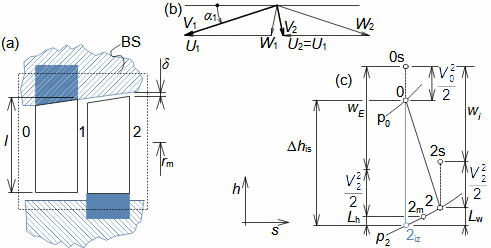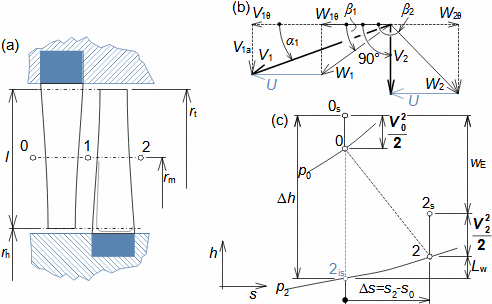Essential concepts for description of internal losses in turbomachinesThe internal losses Lw as the difference between the ideal work and the actual work of the machine are always caused by some transformation or transfer of energy in the individual parts of the machine with different intensity. Apart from profile losses, other types of internal losses also occur, for example, through leakages, friction between the working fluid and the casing and shaft, etc. The individual types of losses are defined in such a way that they can be added together in the final energy balance of the machine to give the final value of internal losses according to Formula 1. However, many types of losses interact to a greater or lesser degree and this must be taken into account in the final calculation. The calculation of internal losses is done within a single stage (internal stage losses) or the whole machine internal machine losses, etc.  1: Internal losses Lw [J·kg-1] internal losses in machine part under investigation; Lx [J·kg-1] value of individual loss in machine part under investigation. x-identification of investigated type of loss.Loss coefficientThe ratio of the individual loss to the ideal work is the loss coefficient (Formula 2a), but depending on the type of machine, the losses and the practices in the field, it can also be defined to the internal work (Formula 2b) or other process.  2: Loss coefficient ξx [1] loss coefficient of individual loss; wid [J·kg-1] ideal work of working fluid; wi [J·kg-1] internal work of working fluid.Calculation of lossesIdeal processThe calculation of losses is conditioned by the knowledge of the dimensions and parameters of the machine part under investigation and the definition of the ideal process (state). This means that the determination of losses is iterative. For example, by initially designing the machine or part of the machine for the case of no loss flow or with only loss estimates, and only after this design is the actual losses calculated and any changes in dimensions and parameters performed to reduce losses, etc. The calculation is most often based on semi-empirical relationships developed for the machine type, numerical calculations (modelling) or on the designer's ability to use his/her broad knowledge of the behaviour of similar machines/stages to predict the loss for a new yet unresolved case. |
